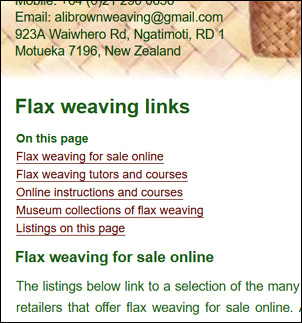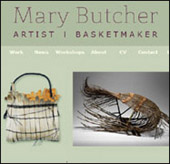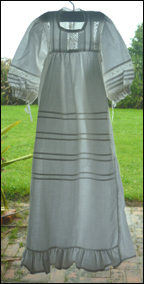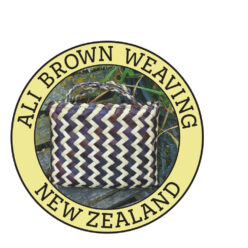25 March 2018
 I recently updated the Links page on this website and added another section for links to on-line instructions and courses. Exploring these confirmed an impression I’d gained through the contacts on my Facebook weaving page — these days more and more people are earning an income, or part of their income, from their weaving. In fact, many people who love a particular art/craft, not necessarily weaving, manage to earn a living from it — by making art/craftworks and selling them, and/or by teaching the art/craft (privately or in a tertiary training organisation), and/or by writing articles or books about it, and/or by wholesaling/importing materials with which to pursue the art/craft.
I recently updated the Links page on this website and added another section for links to on-line instructions and courses. Exploring these confirmed an impression I’d gained through the contacts on my Facebook weaving page — these days more and more people are earning an income, or part of their income, from their weaving. In fact, many people who love a particular art/craft, not necessarily weaving, manage to earn a living from it — by making art/craftworks and selling them, and/or by teaching the art/craft (privately or in a tertiary training organisation), and/or by writing articles or books about it, and/or by wholesaling/importing materials with which to pursue the art/craft.
 It’s not always easy to earn a full living as an artist or craftsperson, and having a detailed documentary record of your work, including your experience and specific skills, will invariably stand you in good stead when offering your services as a tutor, writer, or seller of craftworks. It’s also necessary when applying for funding to be able to show your art/craft history and experience. One way to do this is to have a separate CV for your art/craft work, apart from the CV you use to find employment. For example, Mary Butcher, a basket weaver in the UK, has her craft CV on her website. Many artists/craftspeople also have portfolios of their work, but a CV differs from a portfolio insofar as it documents all your experience in the art/craft world.
It’s not always easy to earn a full living as an artist or craftsperson, and having a detailed documentary record of your work, including your experience and specific skills, will invariably stand you in good stead when offering your services as a tutor, writer, or seller of craftworks. It’s also necessary when applying for funding to be able to show your art/craft history and experience. One way to do this is to have a separate CV for your art/craft work, apart from the CV you use to find employment. For example, Mary Butcher, a basket weaver in the UK, has her craft CV on her website. Many artists/craftspeople also have portfolios of their work, but a CV differs from a portfolio insofar as it documents all your experience in the art/craft world.
 Back in the early 2000s, I wanted to teach weaving in a local polytech and had a craft CV prepared to help me get a job there. Having worked in the employment industry, I knew it was important to choose a CV writer who understands that making a living from your art or craft is a viable career option and doesn’t take the view that you should aim for a ‘real job’. I chose Chris Eilers, a CV/career consultant who had previously prepared a work CV for me, and who understands earning a living from craft work because he’d been a manufacturer of handcrafted leather goods and wooden toys. As it turned out, I didn’t use the CV we prepared. Instead of approaching the polytech for a teaching job, after working with Chris on my CV, I gained enough confidence to start holding private workshops, which I eventually advertised online, and which continue to this day.
Back in the early 2000s, I wanted to teach weaving in a local polytech and had a craft CV prepared to help me get a job there. Having worked in the employment industry, I knew it was important to choose a CV writer who understands that making a living from your art or craft is a viable career option and doesn’t take the view that you should aim for a ‘real job’. I chose Chris Eilers, a CV/career consultant who had previously prepared a work CV for me, and who understands earning a living from craft work because he’d been a manufacturer of handcrafted leather goods and wooden toys. As it turned out, I didn’t use the CV we prepared. Instead of approaching the polytech for a teaching job, after working with Chris on my CV, I gained enough confidence to start holding private workshops, which I eventually advertised online, and which continue to this day.
 Apart from documenting your work for income-earning purposes, it can be a rewarding and informative exercise to revisit your own work over the years, and my children have also been interested to learn about my craft history. (The photos illustrate one of my early craft projects — a baby gown I made in the 1980s when my children were born, along with a close up of the bobbin lacework I wove for it.) Whenever you work on a CV, you are exploring your own craft whakapapa, or craft history, which gives you a sense of where you picked up your various skills and how they may be influencing the work you do now. Also, the knowledge and recognition of your own experience and abilities can instill a greater confidence in the approach you take to earning an income as a craftsperson, and the documentation of your work gives you a factual and authentic base to work from.
Apart from documenting your work for income-earning purposes, it can be a rewarding and informative exercise to revisit your own work over the years, and my children have also been interested to learn about my craft history. (The photos illustrate one of my early craft projects — a baby gown I made in the 1980s when my children were born, along with a close up of the bobbin lacework I wove for it.) Whenever you work on a CV, you are exploring your own craft whakapapa, or craft history, which gives you a sense of where you picked up your various skills and how they may be influencing the work you do now. Also, the knowledge and recognition of your own experience and abilities can instill a greater confidence in the approach you take to earning an income as a craftsperson, and the documentation of your work gives you a factual and authentic base to work from.
 When I hold workshops, people regularly ask me where I learnt flax weaving, or how I got into it. Although I can pinpoint when I first wove with flax to the late 1990s, and still have the first little kete I wove, (I didn’t know at the time that traditionally your first piece of weaving is given away), after remembering all the various types of craft work I have done over the years, I realise there is a much longer history that has influenced, and continues to influence, my work.
When I hold workshops, people regularly ask me where I learnt flax weaving, or how I got into it. Although I can pinpoint when I first wove with flax to the late 1990s, and still have the first little kete I wove, (I didn’t know at the time that traditionally your first piece of weaving is given away), after remembering all the various types of craft work I have done over the years, I realise there is a much longer history that has influenced, and continues to influence, my work.
© Ali Brown 2018.
Scroll down to leave a new comment or view recent comments.
Also, check out earlier comments received on this blog post when it was hosted on my original website.
